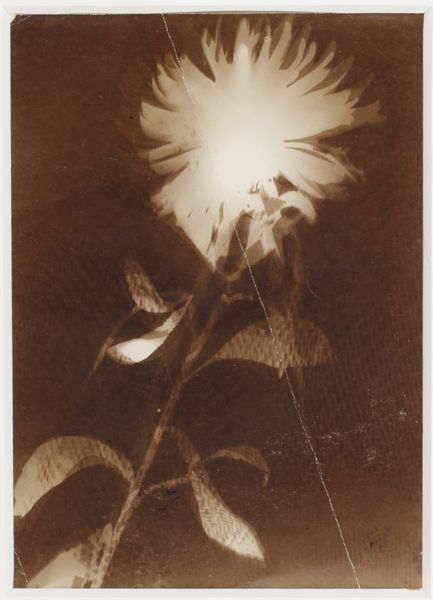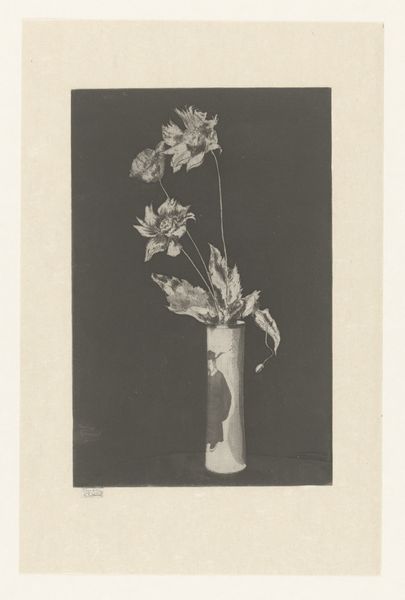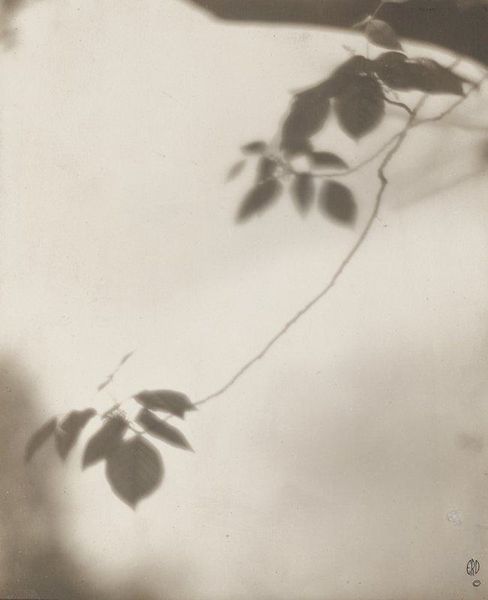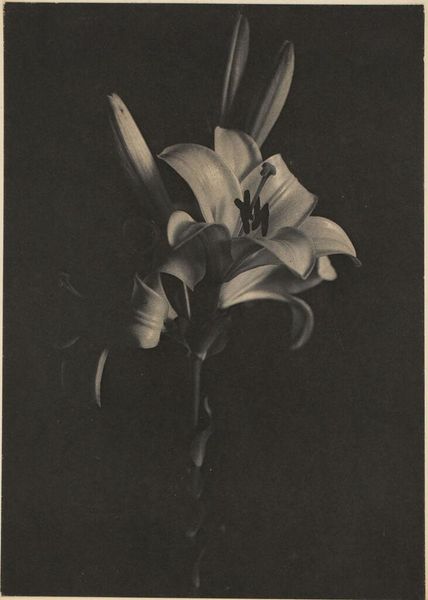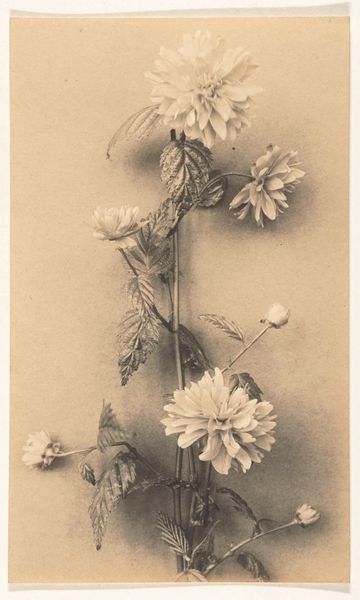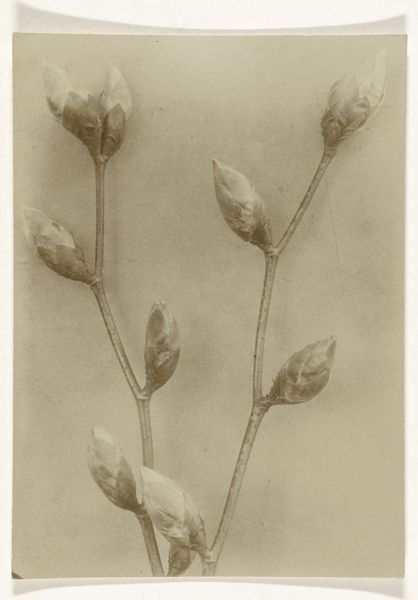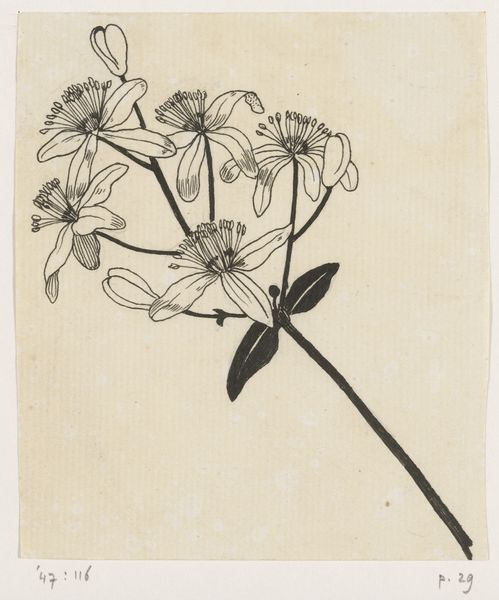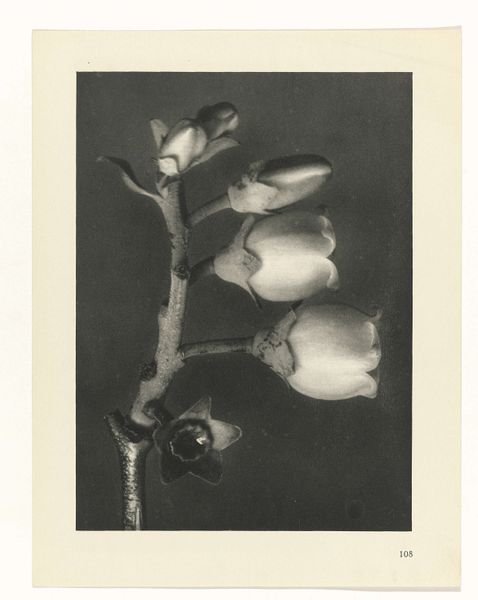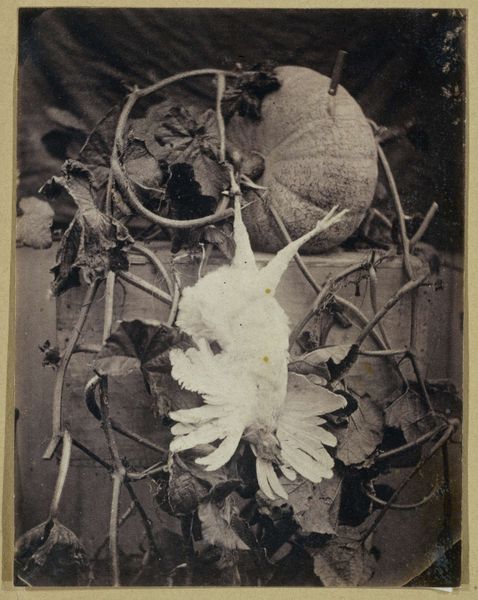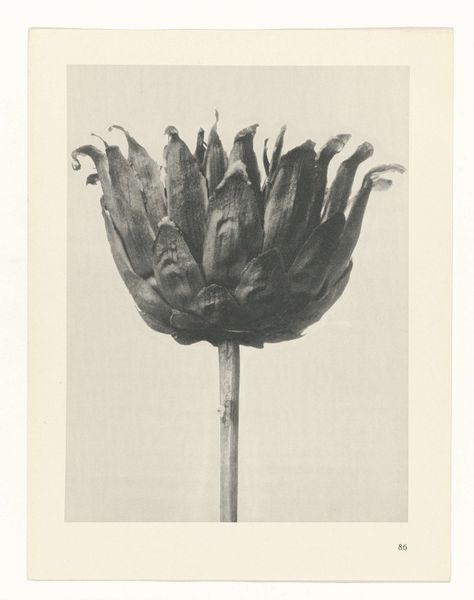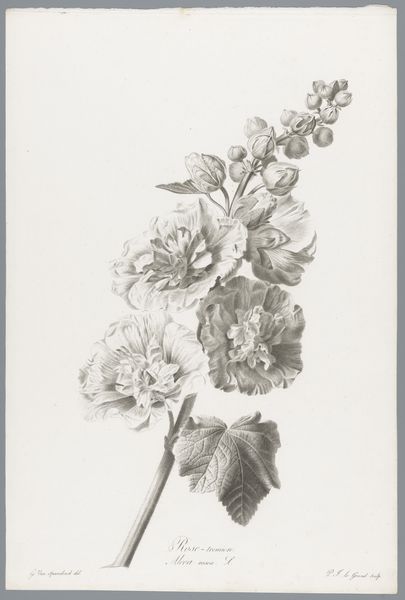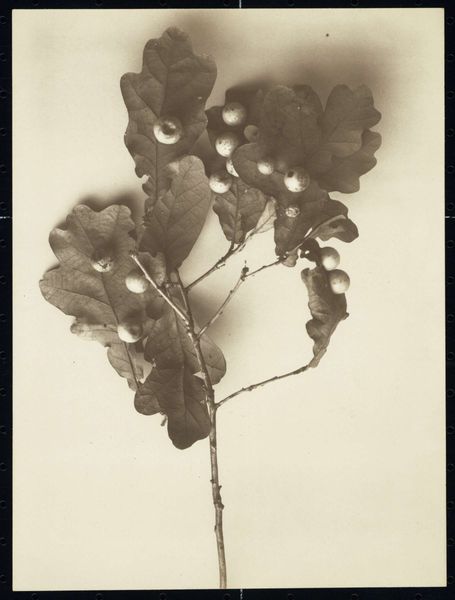
Dimensions: 250 × 163 mm (image, trimmed within platemark); 268 × 189 mm (sheet)
Copyright: Public Domain
Theodore Roussel made this print, La Chine, using etching and drypoint. These are laborious processes, involving the manipulation of metal plates to create an image. The drypoint technique, in particular, gives a velvety quality to the dark areas. It's created by scratching directly into the metal, a very physical process. See how the ink sits on the surface of the plate, creating a blurred effect? The image is a still life of flowers in a vase, but the vase is decorated with a Chinese figure. This immediately brings issues of cultural exchange to mind. Roussel lived in London at a time of great interest in Asian art and design. He's not just representing a pretty scene, but also tapping into a wider cultural conversation around orientalism. The work involved in creating this print is significant. It challenges any easy distinction between ‘high art’ and ‘craft,’ prompting us to appreciate the labor and skill involved in its making.
Comments
No comments
Be the first to comment and join the conversation on the ultimate creative platform.
